Node.js Interview QuestionsA list of top frequently asked Node.js interview questions and answers are given below. 1) What is Node.js?Node.js is Server-side scripting which is used to build scalable programs. It is a web application framework built on Google Chrome's JavaScript Engine. It runs within the Node.js runtime on Mac OS, Windows, and Linux with no changes. This runtime facilitates you to execute a JavaScript code on any machine outside a browser. 2) Is Node.js free to use?Yes. It is released under MIT license and is free to use. 3) Is Node a single threaded application?Yes. Node is a single-threaded application with event looping. 4) What is the purpose of Node.js?These are the following purposes of Node.js:
5) What are the advantages of Node.js?Following are the main advantages of Node.js:
6) Explain Node.js web application architecture?A web application distinguishes into 4 layers:
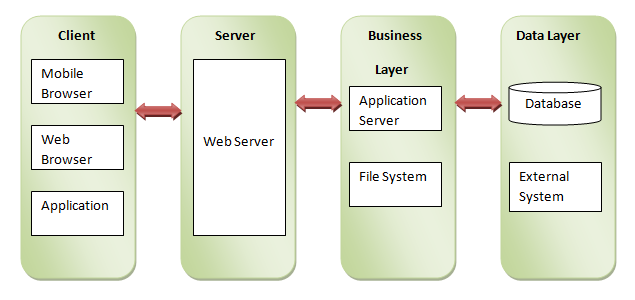
7) What do you understand by the term I/O?The term I/O stands for input and output. It is used to access anything outside of your application. The I/O describes any program, operation, or device that transfers data to or from a medium or another medium. This medium can be a physical device, network, or files within a system. I/O is loaded into the machine memory to run the program once the application starts. 8) How many types of API functions are available in Node.js?There are two types of API functions in Node.js:
9) What do you understand by the first class function in JavaScript?When functions are treated like any other variable, then those functions are called first-class functions. Apart from JavaScript, many other programming languages, such as Scala, Haskell, etc. follow this pattern. The first class functions can be passed as a param to another function (callback), or a function can return another function (higher-order function). Some examples of higher-order functions that are popularly used are map() and filter(). 10) What is the difference between JavaScript and Node.js?Difference between JavaScript and Node.js The following table specifies the crucial differences between JavaScript and Node.js:
11) Explain the working of Node.js?The workflow of a Node.js web server typically looks like the following diagram. Let us see the flow of operations in detail: 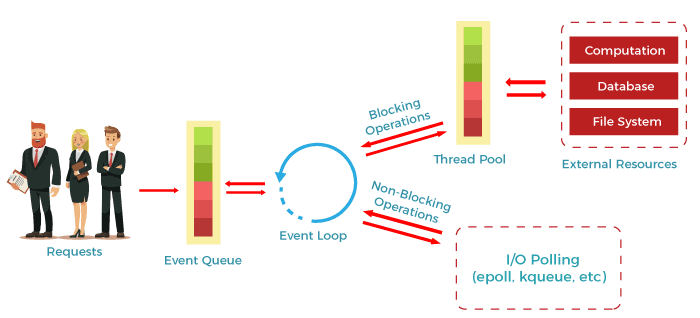
12) How can you manage the packages in your Node.js project?We can manage the packages in our Node.js project by using several package installers and their configuration file accordingly. Most of them use npm or yarn. The npm and yarn both provide almost all libraries of JavaScript with extended features of controlling environment-specific configurations. We can use package.json and package-lock.json to maintain versions of libs being installed in a project. So, there is no issue in porting that app to a different environment. 13) Why is Node.js Single-threaded?Node.js is a single-threaded application with event looping for async processing. The biggest advantage of doing async processing on a single thread under typical web loads is that you can achieve more performance and scalability than the typical thread-based implementation. 14) What do you understand by callback hell in Node.js?Callback hell is a phenomenon that creates a lot of problems for a JavaScript developer when he tries to execute multiple asynchronous operations one after the other. A function is called an asynchronous function when some external activity must complete before processing a result. It is called asynchronous because there is an unpredictable amount of time before a result becomes available. These functions require a callback function to handle errors and process the result. Example: 15) How is Node.js better than other most popular frameworks?Based on the following criteria, we can say that Node.js is better than other most popular frameworks:
16) In which types of applications is Node.js most frequently used?Node.js is most frequently and widely used in the following applications:
17) What are some commonly used timing features of Node.js?Following is a list of some commonly used timing features of Node.js:
18) What do you understand by the term fork in Node.js?Generally, a fork is used to spawn child processes. In Node.js, it is used to create a new instance of the V8 engine to run multiple workers to execute the code. 19) Which is the best tool we can use to assure consistent code style in Node.js?ESLint tool is one of the best tools we can use with any IDE to ensure a consistent coding style. It also helps in maintaining the codebase. 20) What is the main difference between front-end and back-end development?The following table specifies the key differences between a front-end and back-end development:
21) Give an example to demonstrate how can we use async await in Node.js?See the following example of using async-await pattern: 22) What are the modules in Node.js? Which are the different modules used in Node.js?In Node.js applications, modules are like JavaScript libraries and include a set of functions. To include a module in a Node.js application, we must use the require() function with the parentheses containing the module's name. Node.js has several modules which are used to provide the basic functionality needed for a web application. Following is a list of some of them:
23) What are buffers in Node.js?In general, a buffer is a temporary memory mainly used by the stream to hold on to some data until it is consumed. Buffers are used to represent a fixed-size chunk of memory allocated outside of the V8 JavaScript engine. It can't be resized. It is like an array of integers, which each represents a byte of data. It is implemented by the Node. js Buffer class. Buffers also support legacy encodings like ASCII, utf-8, etc. 24) What is error-first callback?Error-first callbacks are used to pass errors and data. If something goes wrong, the programmer has to check the first argument because it is always an error argument. Additional arguments are used to pass data. 25) What is an asynchronous API?All the API's of Node.js library are asynchronous means non-blocking. A Node.js based server never waits for an API to return data. The Node.js server moves to the next API after calling it, and a notification mechanism of Events of Node.js responds to the server for the previous API call. 26) How can you avoid callbacks?To avoid callbacks, you can use any one of the following options:
27) Does Node.js provide Debugger?Yes, Node.js provides a simple TCP based protocol and built-in debugging client. For debugging your JavaScript file, you can use debug argument followed by the js file name you want to debug. Syntax:28) What is a control flow function?Control flow function is a generic piece of code that runs in between several asynchronous function calls. 29) How "Control Flow" controls the functions calls?The control flow does the following job:
30) Is it possible to access DOM in Node?No, it is not possible to access DOM in Node. 31) What types of tasks can be done asynchronously using the event loop?
32) What is REPL in Node.js?REPL stands for Read Eval Print Loop. It specifies a computer environment like a window console or Unix/Linux shell where you can enter a command, and the computer responds with an output. It is very useful in writing and debugging the codes. REPL environment incorporates Node.js. See the Example: 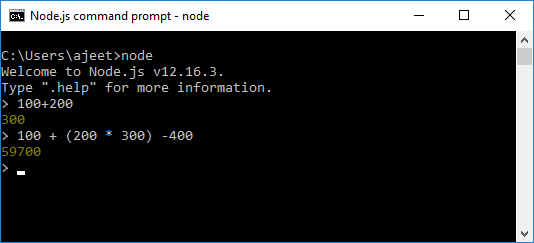
33) Explain the tasks of terms used in Node REPL.Following are the terms used in REPL with their defined tasks: Read: It reads user's input; parse the input into JavaScript data-structure and stores in memory. Eval: It takes and evaluates the data structure. Print: It is used to print the result. Loop: It loops the above command until user press ctrl-c twice to terminate. 34) Is it possible to evaluate simple expressions using Node REPL?Yes. You can evaluate simple expressions using Node REPL. 35) What is the use of the underscore variable in REPL?In REPL, the underscore variable is used to get the last result. 36) Does Node.js supports cryptography?Yes, Node.js Crypto module supports cryptography. It provides cryptographic functionality that includes a set of wrappers for open SSL's hash HMAC, cipher, decipher, sign and verify functions. For example: 37) What is npm? What is the main functionality of npm?npm stands for Node Package Manager. Following are the two main functionalities of npm:
38) What tools can be used to assure a consistent style in Node.js?Following is a list of tools that can be used in developing code in teams, to enforce a given style guide and to catch common errors using static analysis.
39) What is the difference between operational and programmer errors?Operational errors are not bugs, but create problems with the system like request timeout or hardware failure. On the other hand, programmer errors are actual bugs. 40) What is the difference between the global installation of dependencies and local installation of dependencies?
41) What is the use of a buffer class in Node.js?The Node.js provides Buffer class to store raw data similar to an array of integers but corresponds to a raw memory allocation outside the V8 heap. It is a global class and can be accessed in an application without importing a buffer module. Buffer class is used because pure JavaScript is not compatible with binary data. So, when dealing with TCP streams or the file system, it's necessary to handle octet streams. 42) What is the role of assert in Node.js?The Node.js Assert is a way to write tests. It provides no feedback when running your test unless one fails. The assert module provides a simple set of assertion tests that can be used to test invariants. The module is intended for internal use by Node.js, but can be used in application code via require ('assert'). For example: 43) What are the streams in Node.js?The Streams are the objects that facilitate you to read data from a source and write data to a destination. There are four types of streams in Node.js:
44) What is event-driven programming in Node.js?In Node.js, event-driven programming means as soon as Node starts its server, it initiates its variables, declares functions and then waits for an event to occur. It is one of the reasons why Node.js is pretty fast compared to other similar technologies. 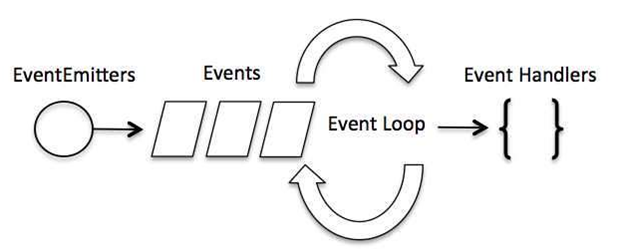
45) What is the difference between events and callbacks in Node.js?Although, Events and Callbacks look similar the differences lies in the fact that callback functions are called when an asynchronous function returns its result whereas event handling works on the observer pattern. Whenever an event gets fired, its listener function starts executing. Node.js has multiple in-built events available through the events module and EventEmitter class which is used to bind events and event listeners. 46) What is the Punycode in Node.js?The Punycode is an encoding syntax which is used to convert Unicode (UTF-8) string of characters to ASCII string of characters. It is bundled with Node.js v0.6.2 and later versions. If you want to use it with other Node.js versions, then use npm to install Punycode module first. You have to used require ('Punycode') to access it. Syntax:47) What does Node.js TTY module contains?The Node.js TTY module contains tty.ReadStream and tty.WriteStream classes. In most cases, there is no need to use this module directly. You have to used require ('tty') to access this module. Syntax:48) What are the key differences between Angular and Node.js?Key differences between Angular and Node.js:
49) What are the main differences between operational and programmer errors?The most crucial difference between operational and programmer errors is that the operational errors are not bugs but problems with the system such as to request timeout or hardware failure. On the other hand, the programmer errors are actual bugs in the application. 50) What do you understand by an EventEmitter in Node.js?In Node.js, an EventEmitter is a class that includes all the objects capable of emitting events. This can be achieved by attaching named events that are emitted by the object using an eventEmitter.on() function. Thus whenever this object throws an event, the attached functions are invoked synchronously. Example: 51) What is the difference between readFile and createReadStream in Node.js?In Node.js, there are two ways to read and execute files: readFile and CreateStream.
52) What is the concept of Punycode in Node.js?In Node.js, the concept of Punycode is used for converting one type of string into another type. Punycode is an encoding syntax used for converting Unicode (UTF-8) string of characters into a basic ASCII string of characters. Now, the hostnames can only understand the ASCII characters so, after the Node.js version 0.6.2 onwards, it was bundled up with the default Node package. To use it with any previous versions, you have to use the following code: Syntax: 53) How can you enhance the Node.js performance through clustering?Just because the Node.js applications run on a single processor, they don't take advantage of a multiple-core system by default. Clustering is used to overcome this issue. The cluster mode is used to start up multiple node.js processes, thereby having multiple instances of the event loop. When we start using clusters in a Node.js app, it creates multiple node.js processes. But there is also a parent process called the cluster manager, which is responsible for monitoring the health of the individual instances of the application. 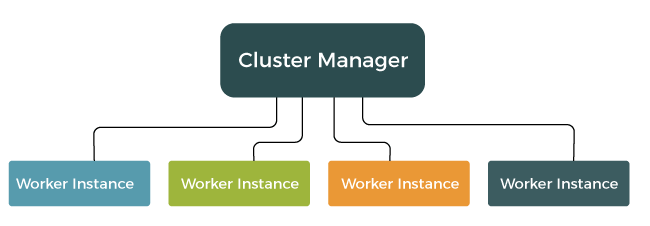
54) What is a thread pool in Node.js? Which library handles it?In Node.js, the libuv library is used to handle the Thread pool. The libuv library is a multi-platform C library that supports asynchronous I/O-based operations such as file systems, networking, and concurrency. 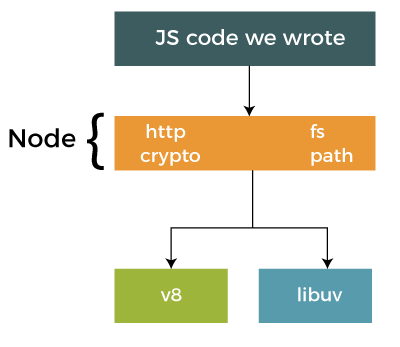
|
You may also like:
- Java Interview Questions
- SQL Interview Questions
- Python Interview Questions
- JavaScript Interview Questions
- Angular Interview Questions
- Selenium Interview Questions
- Spring Boot Interview Questions
- HR Interview Questions
- C Programming Interview Questions
- C++ Interview Questions
- Data Structure Interview Questions
- DBMS Interview Questions
- HTML Interview Questions
- IAS Interview Questions
- Manual Testing Interview Questions
- OOPs Interview Questions
- .Net Interview Questions
- C# Interview Questions
- ReactJS Interview Questions
- Networking Interview Questions
- PHP Interview Questions
- CSS Interview Questions
- Node.js Interview Questions
- Spring Interview Questions
- Hibernate Interview Questions
- AWS Interview Questions
- Accounting Interview Questions







